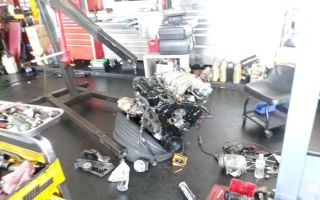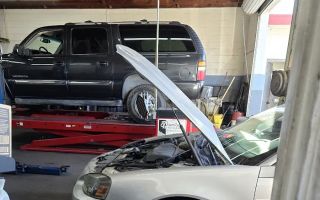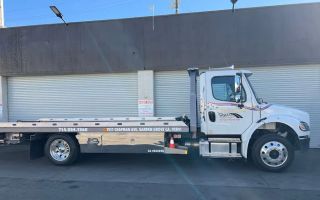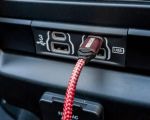- 1 - Understanding the Oil Pressure Relief Valve
- 2 - Why Your Oil Pressure Relief Valve is Crucial
- 3 - How to Check Your Oil Pressure Relief Valve
- 4 - Common Signs of Oil Pressure Relief Valve Issues
- 5 - Maintaining Your Oil Pressure Relief Valve
- 6 - How Failure to Check Can Affect Your Engine
- 7 - Real-Life Examples of Oil Pressure Relief Valve Failures
- 8 - When to Seek Professional Help
- 9 - How Rescue & Towing Can Assist You
- 10 - Final Thoughts on Oil Pressure Relief Valve Maintenance
1. Understanding the Oil Pressure Relief Valve
The oil pressure relief valve is an essential component of your vehicle's engine lubrication system. It regulates the oil pressure by diverting excess oil back into the engine’s oil pan if the pressure rises too high. This ensures that the engine doesn’t get overwhelmed with oil pressure, which can lead to damage and inefficiency. Essentially, the oil pressure relief valve acts as a safeguard, protecting your engine from potential harm.
Regularly checking the oil pressure relief valve ensures that it is functioning properly and preventing dangerous pressure build-ups within the engine’s oil system.

Pick Your Part - Help Yourself
1232 Blinn Ave, Wilmington, CA 90744, USA
2. Why Your Oil Pressure Relief Valve is Crucial
Your engine’s oil pressure relief valve helps to regulate the oil pressure within a safe range, which is crucial for maintaining engine health. If the valve becomes clogged, stuck, or otherwise malfunctioning, it can cause the oil pressure to rise beyond the recommended levels. High oil pressure can lead to over-lubrication, excessive heat, or even oil leaks, which can damage internal engine parts such as seals, gaskets, and pistons.
Without the proper functioning of this valve, your engine could experience severe problems, resulting in costly repairs and potential engine failure. Therefore, it is critical to regularly inspect and maintain this small but powerful valve.

Pick Your Part - Greer
13054 E Wade Hampton Blvd, Greer, SC 29651, USA
3. How to Check Your Oil Pressure Relief Valve
Checking your oil pressure relief valve requires some technical knowledge and the right tools. Here’s a simple step-by-step guide to ensure it’s working properly:
1. Locate the valve: The oil pressure relief valve is typically located near the oil filter or within the engine block. Refer to your vehicle’s manual for exact location details.
2. Remove the valve: With the engine turned off and cooled down, you may need to remove the oil filter or a related cover to access the valve. It’s important to have the proper tools to avoid damage during this step.
3. Inspect the valve for clogs or damage: Check for signs of debris, wear, or damage to the valve. If the valve appears clogged or worn, it may not function properly and could need replacement.
4. Test the pressure: You may also want to test the oil pressure with a pressure gauge to ensure the oil pressure levels are within the recommended range. If the pressure readings are too high or too low, this can indicate an issue with the relief valve.
4. Common Signs of Oil Pressure Relief Valve Issues
If your oil pressure relief valve is malfunctioning, there are several warning signs you may notice:
1. High or fluctuating oil pressure: If the oil pressure gauge shows unusually high pressure or fluctuates, this could be a sign that the relief valve is not working properly.
2. Oil leaks: Leaking oil around the engine or oil filter could indicate an issue with the relief valve, causing oil to escape due to pressure build-up.
3. Strange engine noises: A malfunctioning valve may cause improper oil lubrication, leading to loud or unusual engine noises like knocking or ticking sounds.
4. Oil pressure warning light: If the oil pressure warning light comes on in your vehicle’s dashboard, it could indicate a problem with the oil system, including the relief valve.
5. Maintaining Your Oil Pressure Relief Valve
Proper maintenance of your oil pressure relief valve is essential to keep your engine running smoothly. Here are some tips to help you maintain it:
1. Regular oil changes: Changing your oil regularly ensures that the oil remains clean and free of debris, reducing the likelihood of clogs in the relief valve.
2. Use the right oil: Using the manufacturer-recommended oil type and viscosity can help prevent unnecessary pressure on the valve and reduce wear on the oil system.
3. Inspect the valve regularly: Make it a habit to inspect the valve every time you change the oil to check for any signs of damage, corrosion, or wear. Early detection can prevent bigger issues later.
6. How Failure to Check Can Affect Your Engine
Neglecting to check your oil pressure relief valve can lead to a series of serious issues within your engine. Over time, the build-up of excessive pressure can cause oil seals and gaskets to fail, leading to leaks and the loss of essential lubrication. This, in turn, can cause parts of the engine to overheat and wear out prematurely, resulting in costly repairs or even total engine failure.
In extreme cases, the oil pressure relief valve failure can result in catastrophic engine damage, which may require a complete engine replacement. That’s why it’s so important to check the oil pressure relief valve regularly and address any issues immediately.
7. Real-Life Examples of Oil Pressure Relief Valve Failures
Real-life stories of oil pressure relief valve failures highlight the importance of regular maintenance. For instance, one car owner reported hearing loud knocking sounds and seeing the oil pressure gauge fluctuate erratically. Upon inspection, they discovered a clogged relief valve that had caused high pressure, damaging the engine’s seals. After replacing the valve, the car was restored to normal performance without the need for more expensive repairs.
Another driver shared their experience of ignoring an oil pressure warning light. They eventually found that the oil pressure relief valve was stuck in the closed position, causing excess pressure to build up. This issue led to a blown gasket and a costly engine repair.
8. When to Seek Professional Help
If you’re unsure about how to check your oil pressure relief valve or suspect it may be malfunctioning, it’s best to seek professional help. A qualified mechanic can perform a thorough inspection and test the valve to ensure it’s functioning properly. If necessary, they can replace the valve or clean it to restore proper oil pressure regulation.
9. How Rescue & Towing Can Assist You
If you’re experiencing oil pressure issues, Rescue & Towing can help. Our expert mechanics can perform a complete oil system inspection and ensure that your oil pressure relief valve is working as it should. We also offer emergency towing and repairs to get you back on the road as quickly as possible.
10. Final Thoughts on Oil Pressure Relief Valve Maintenance
Maintaining your oil pressure relief valve is a small but crucial step in keeping your engine running efficiently and avoiding costly repairs. By regularly checking the valve, addressing issues promptly, and performing routine maintenance, you can ensure the longevity and reliability of your vehicle’s engine. Remember, prevention is always more cost-effective than dealing with major engine failures down the road.
For expert advice and services related to oil pressure systems, visit Rescue & Towing for professional assistance.



























